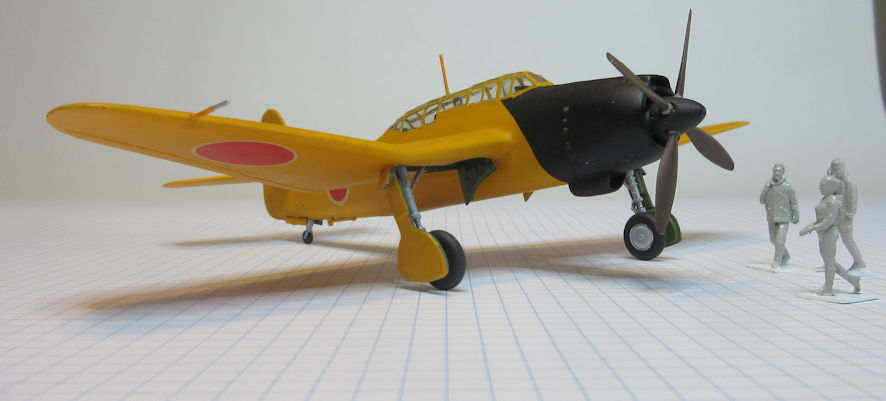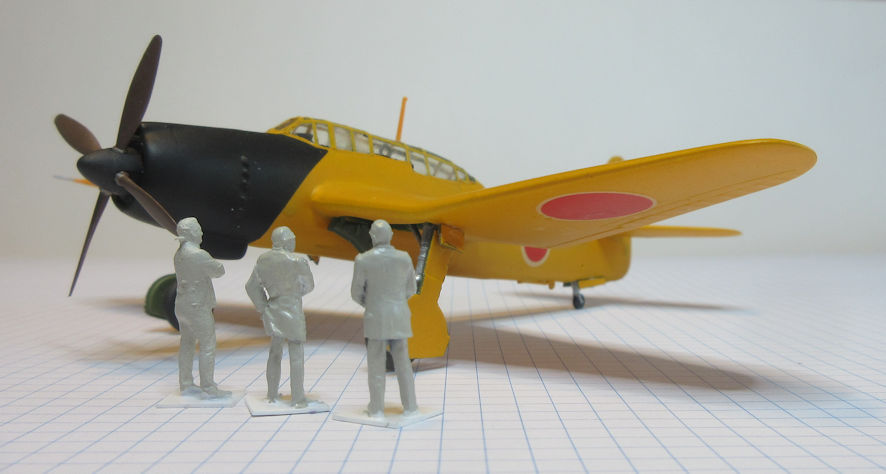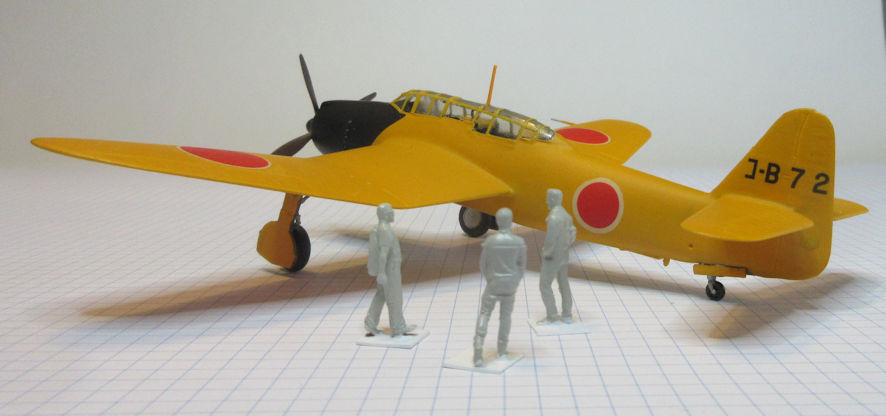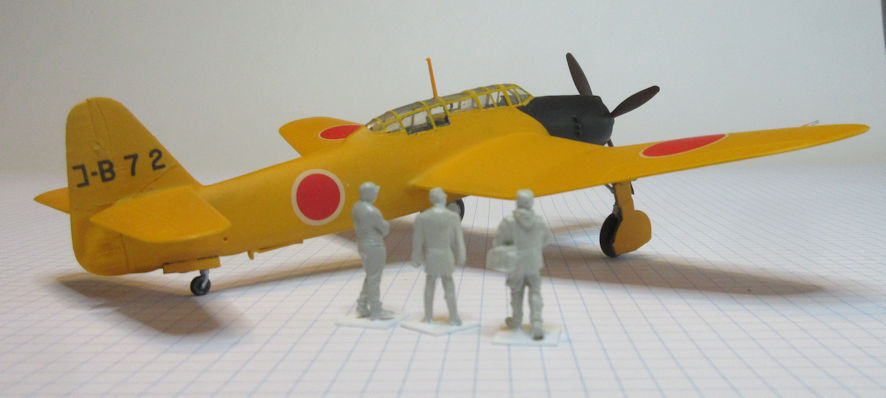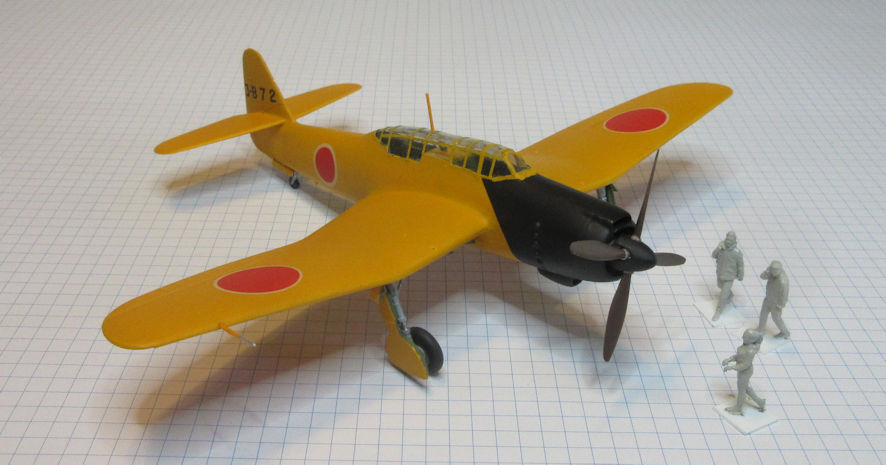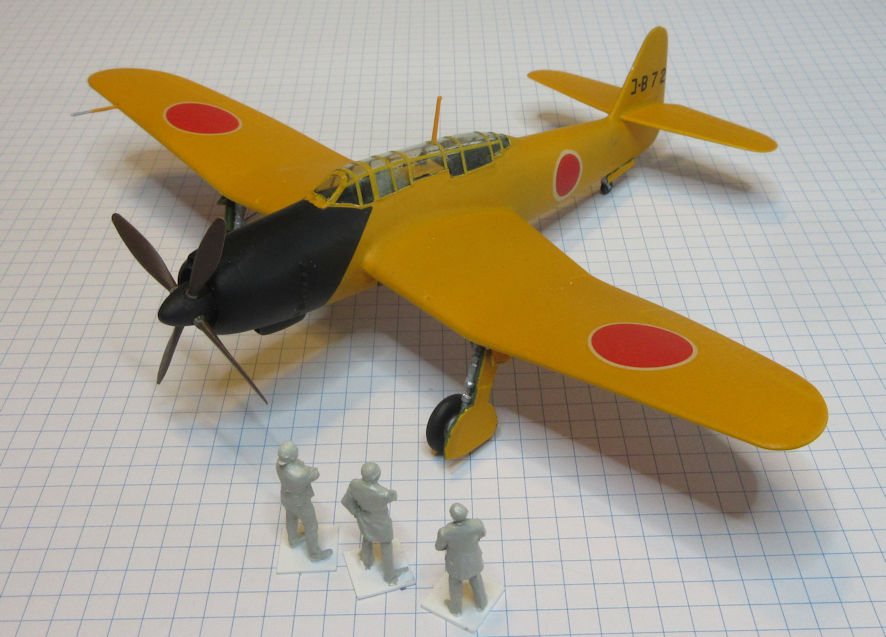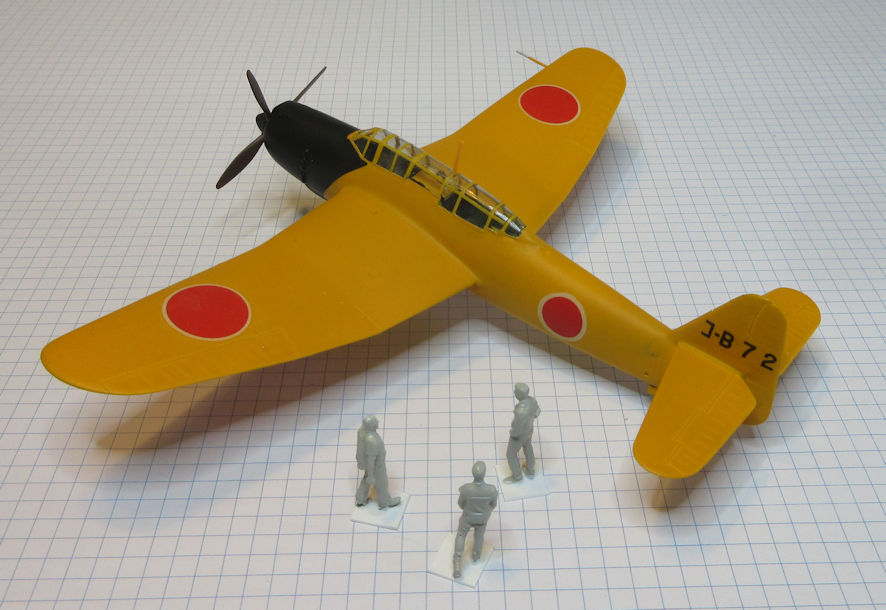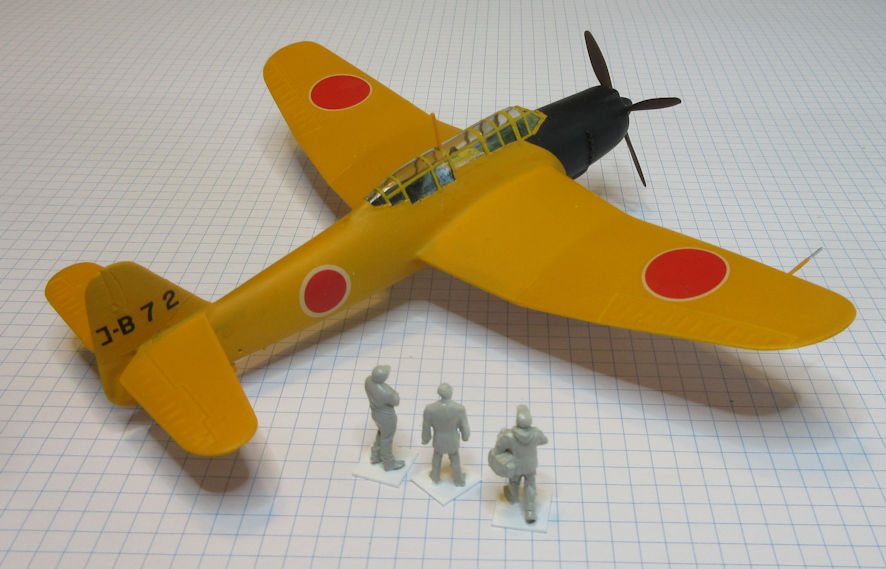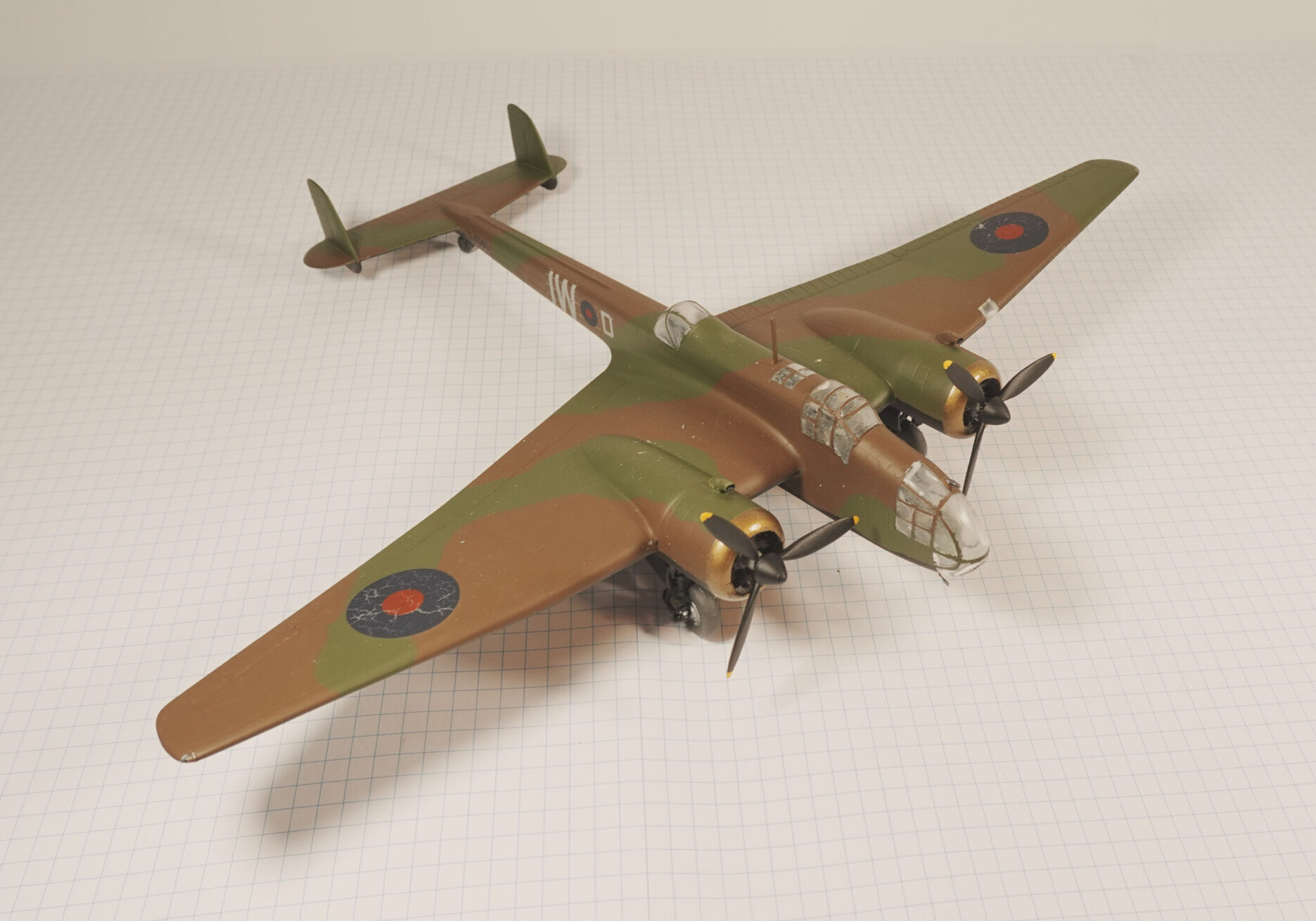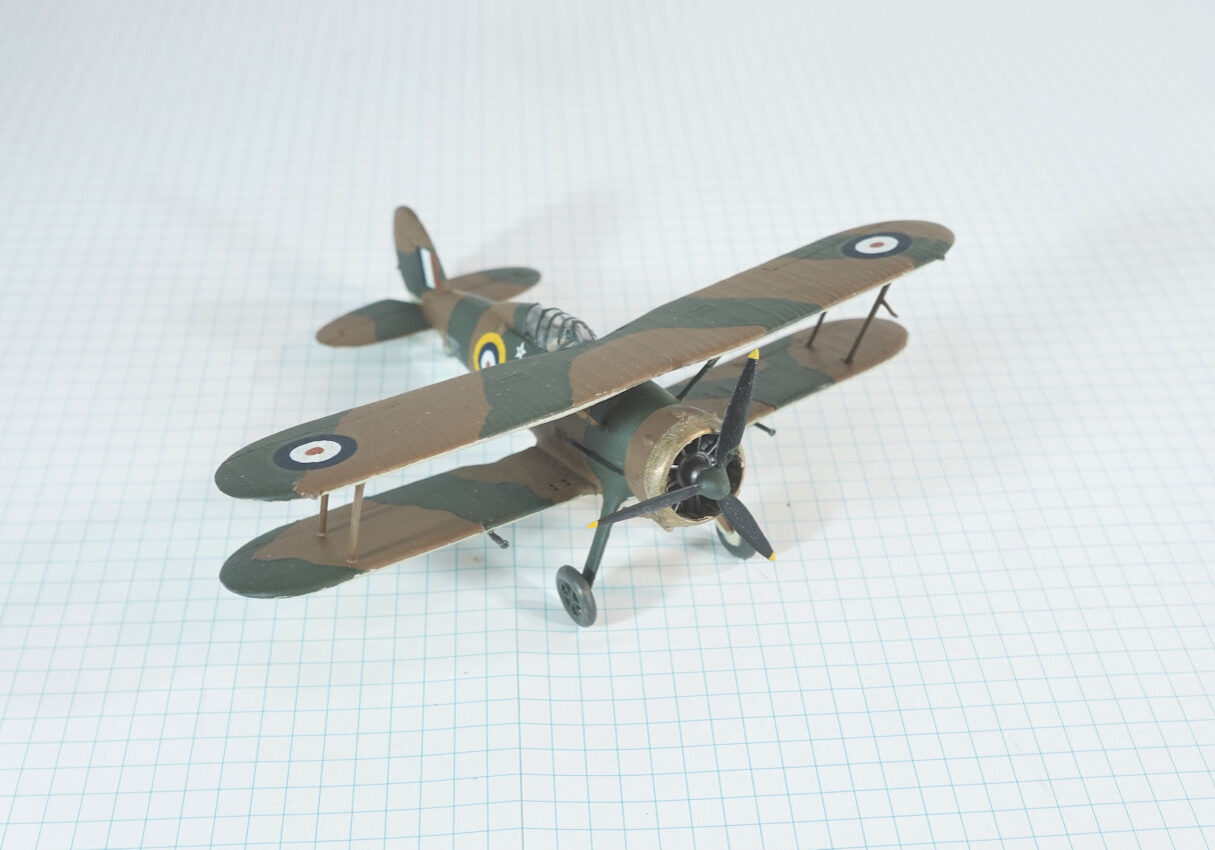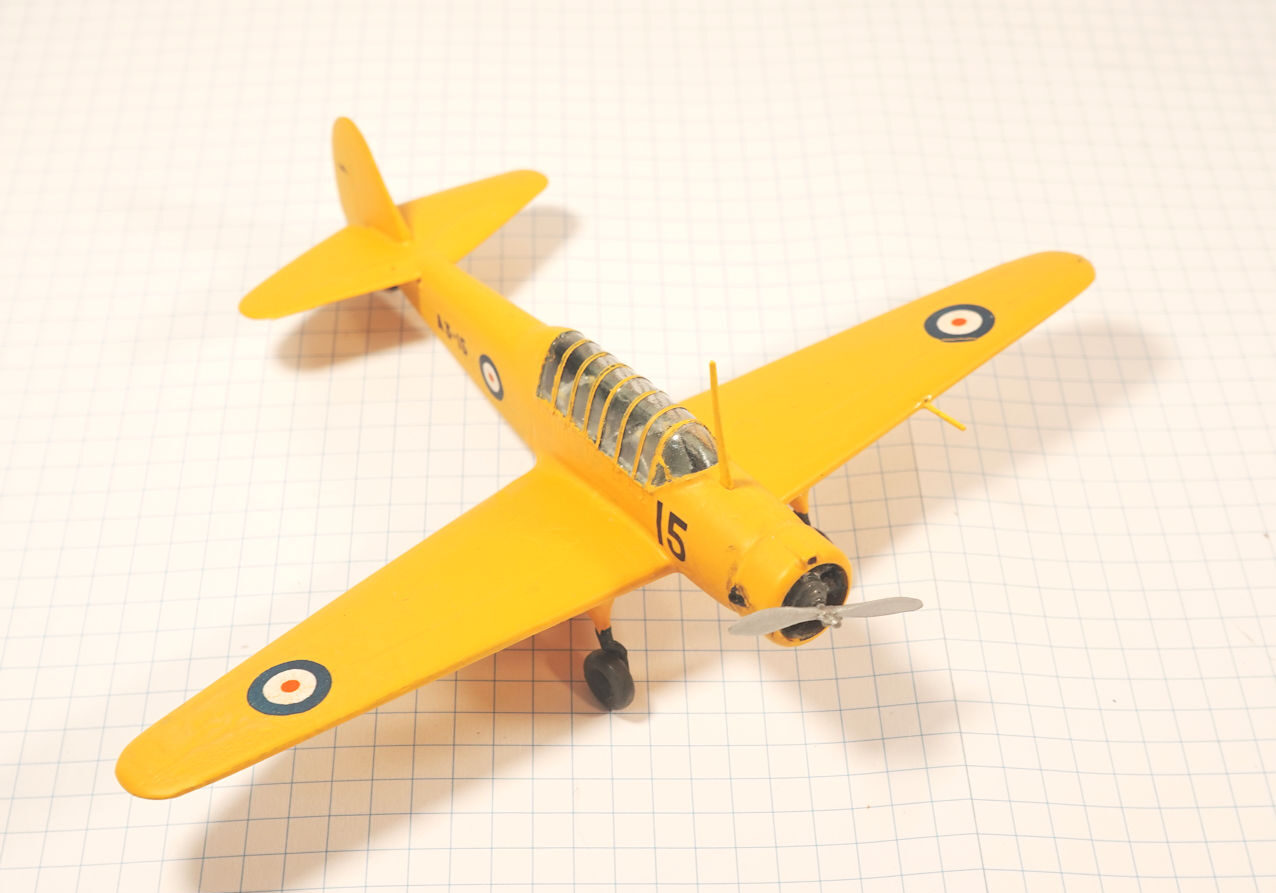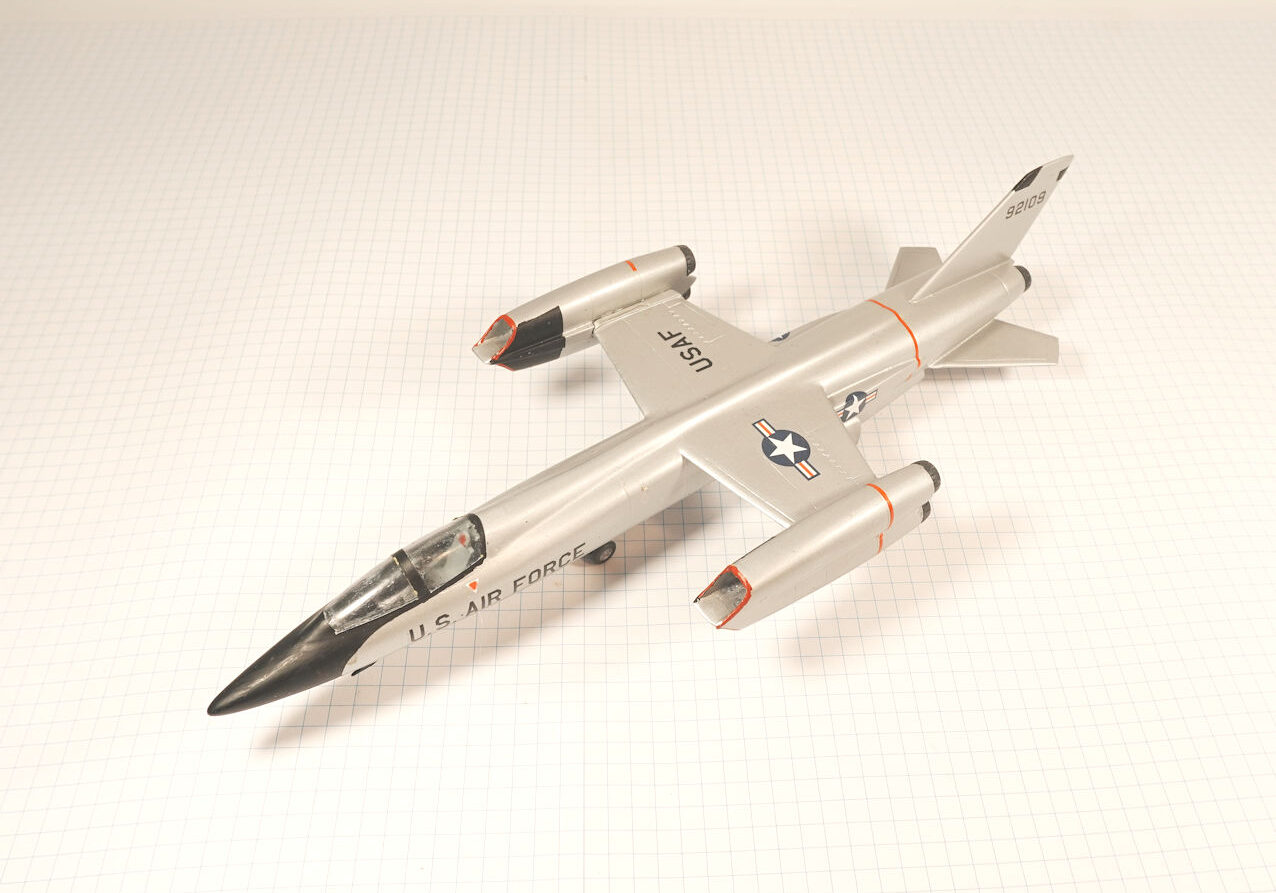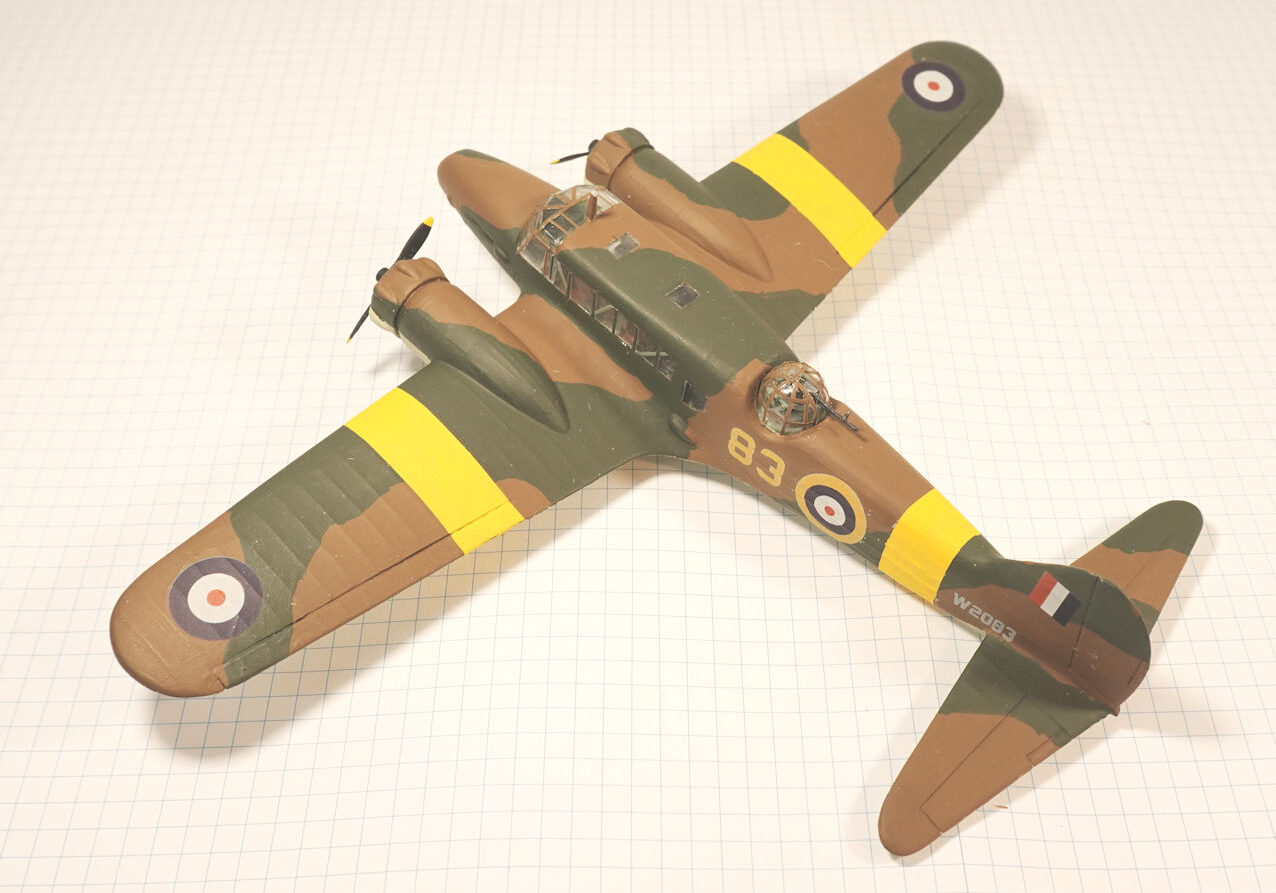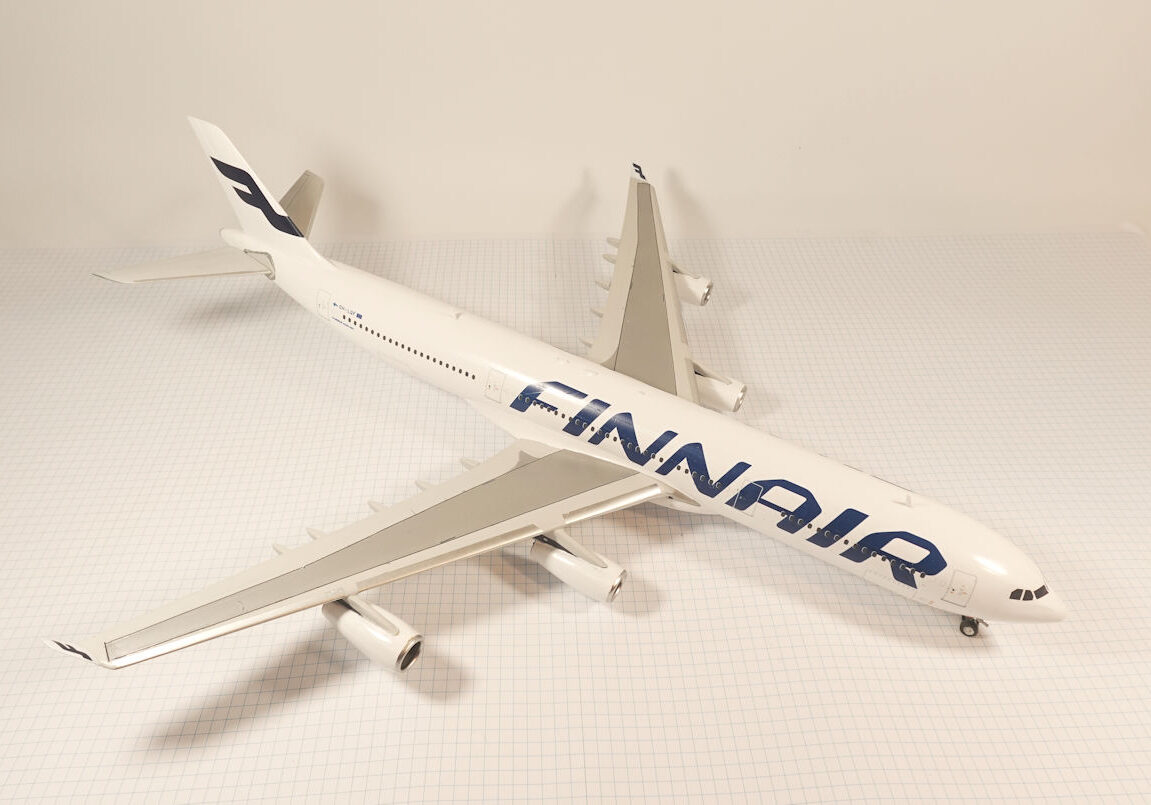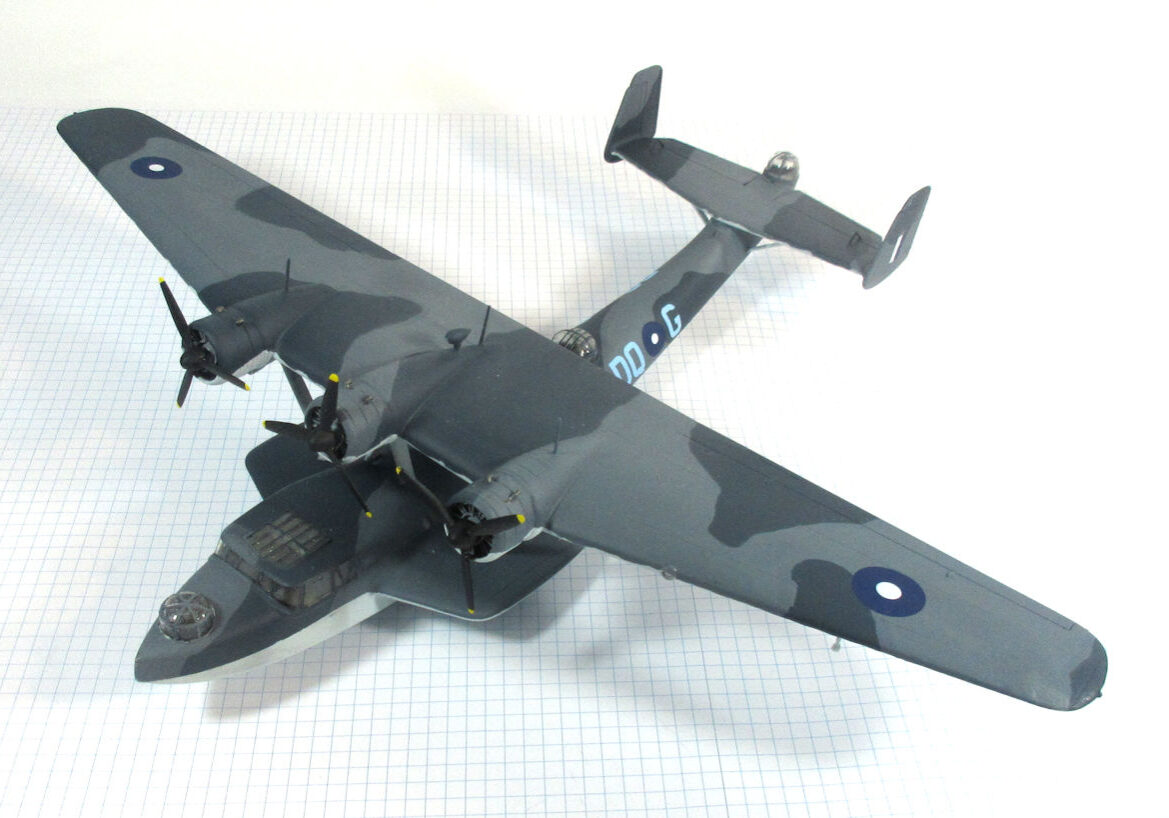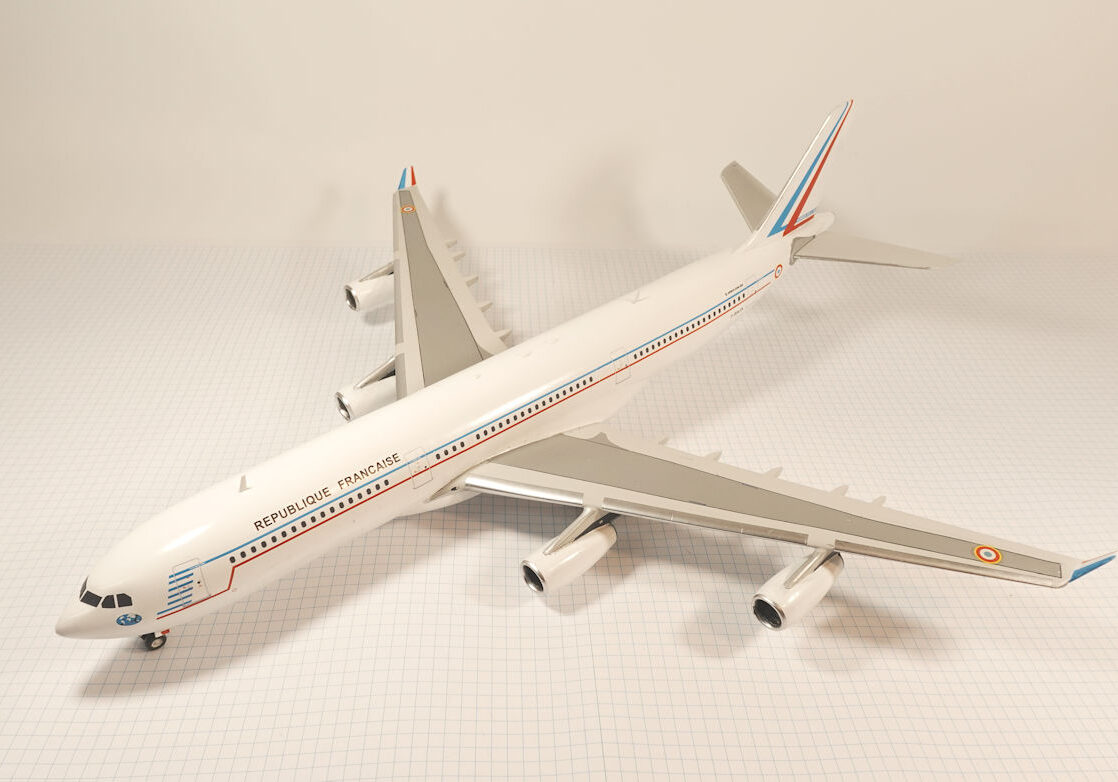History
The Aichi B7A was developed to give the Imperial Japanese a modern and fast torpedo and dive bomber. Despite its excellent qualities it’s late entry into the war meant it had little effect on the course of the conflict.
The Aichi B7A (Allied reporting name ‘Grace’) was designed to replace the Imperial Japanese Navy’s existing dive and torpedo bombers and fly from the next and larger generation of Japanese aircraft carriers.
The prototype made it’s first flight in May 1942 but it did not enter production until May 1944.
By then Japan’s larger aircraft carriers had been sunk so the few B7As that were made were forced to fly from land bases and had little impact on the course of the war despite their speed and agility.
This model represents a prototype B7A1 in 1942.
Fujimi 1:72 kit. Completed in October 2018
